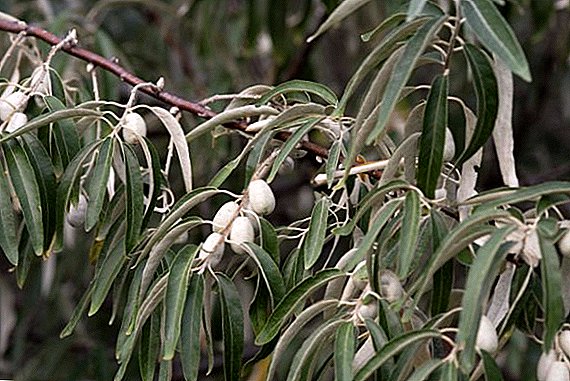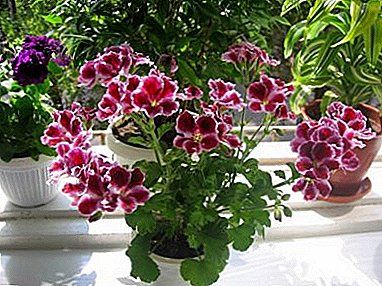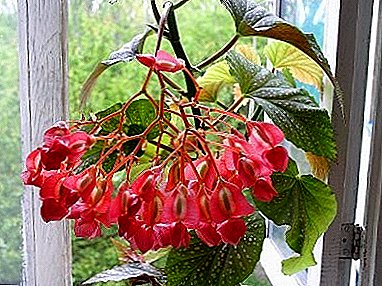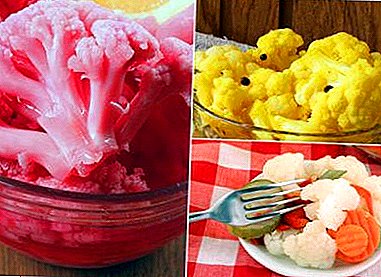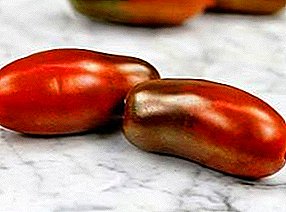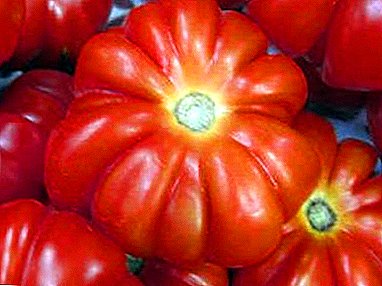
Tomato is one of the most favorite vegetable crops grown throughout Russia. But if in the European part, especially in its southern areas, growing tomatoes does not require much effort, then under the conditions of, say, Siberia, we have to grow special varieties that are resistant to frost and temperature changes.
In more detail about this grade you can learn from our article. In it, we have prepared for you a complete description of the variety, its cultivation features and main characteristics.
Japanese Crab Tomato: variety description
 The variety "Japanese Crab" belongs to the Siberian series of the manufacturer "Siberian Garden", it is not a hybrid. This is a new variety with original ribbed fruits, bred both for film greenhouses and for open ground, indeterminate, mid-season, large-fruited, very productive. With one bush can collect 5-7 kg of fruit. Fruits ripen after 110-115 days after planting, usually in July and early August, fructification continues until the autumn cold.
The variety "Japanese Crab" belongs to the Siberian series of the manufacturer "Siberian Garden", it is not a hybrid. This is a new variety with original ribbed fruits, bred both for film greenhouses and for open ground, indeterminate, mid-season, large-fruited, very productive. With one bush can collect 5-7 kg of fruit. Fruits ripen after 110-115 days after planting, usually in July and early August, fructification continues until the autumn cold.
Characteristics of the fruit:
- Unripe tomatoes are green in color, the stem is slightly darker. As they mature, they become bright red, magenta-pink or yellow.
- Fruits weighing 250-350 g (and the most experienced gardeners even up to 800)
- Flat form.
- Have at least six cameras.
- Fleshy and juicy, have a wonderful taste: sweet, with a slight sourness.
The variety is considered one of the best salad varieties. But can be used for canning, it is perfect for lecho, tomato paste, juice. Tomatoes are kept medium, so you should not leave them without processing for a long time. The disadvantages of the variety include the presence of a dense white-green zone around the stem and weak fruit set in a cool and humid summer. When the temperature drops to 2-4 degrees, the ovary may even fall off.
A photo
Next you will see some pictures of the Japanese Crab tomato.


Cultivation and care
 Seeds for seedlings are planted in March, seed germination is 93-95%. After the appearance of 2 leaves the plant is diving. Tomatoes are planted in heated greenhouses in early April, and in open ground no earlier than May, 3-4 plants per square meter. Good precursors for tomatoes are beans and cabbage, as well as cucumbers, onions, carrots.
Seeds for seedlings are planted in March, seed germination is 93-95%. After the appearance of 2 leaves the plant is diving. Tomatoes are planted in heated greenhouses in early April, and in open ground no earlier than May, 3-4 plants per square meter. Good precursors for tomatoes are beans and cabbage, as well as cucumbers, onions, carrots.
Powerful plants with dark green foliage reach a height of 1.5 to 2 meters, do not belong to the standard, and therefore require pasynkovaniya and garters to the vertical or horizontal trellis.
It is recommended to grow them in one or two stems, if desired forming the second stem from the stepson under the first brush. The remaining stepsons are removed. Water the plant preferably with warm water, fertilize 2-3 times over the entire period with complex mineral fertilizers intended for tomatoes.
Diseases and pests
Bred especially for the harsh Siberian conditions, the Japanese crab is not picky enough and is resistant to vertex and root rot, late blight and tobacco mosaic.
However, low nighttime temperatures and prolonged, inclement weather can cause phytophthora occurrence, and too high air humidity at high temperatures can cause cladosporia. At the first signs of disease, it is necessary to treat plants every three days with special means. (ash, trichopol or phytosporin in the first case and copper-containing preparations in the second).
In the southern regions, the plant's resistance to adverse conditions is clearly excessive; therefore, the variety is recommended for regions with a sharply continental climate. Despite the relative youth of the variety - it has been cultivated for a dozen years - “Japanese crab” has already been appreciated by summer residents and tomato lovers. We hope it will take root in your garden!


